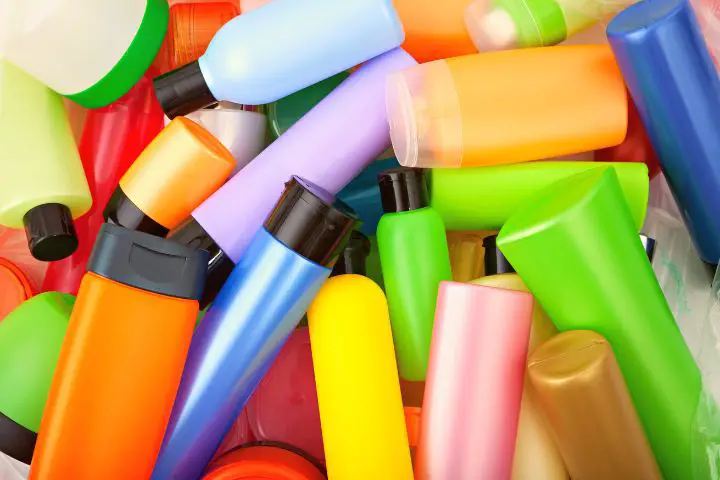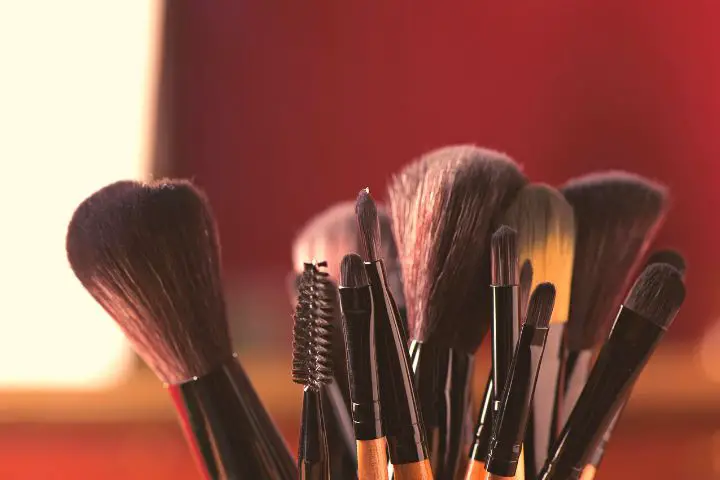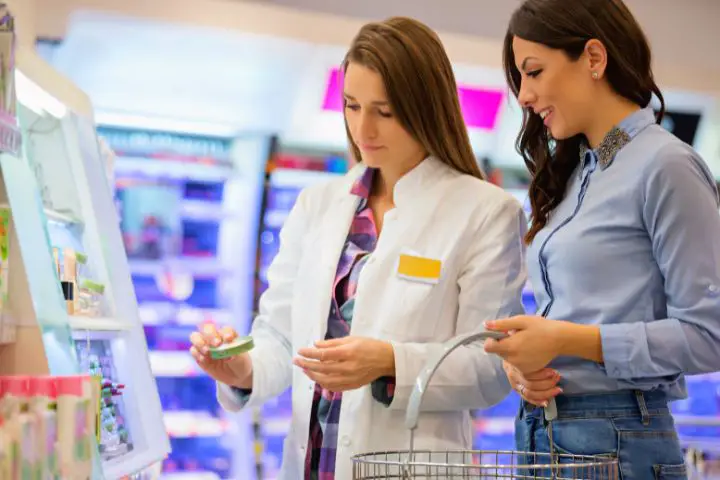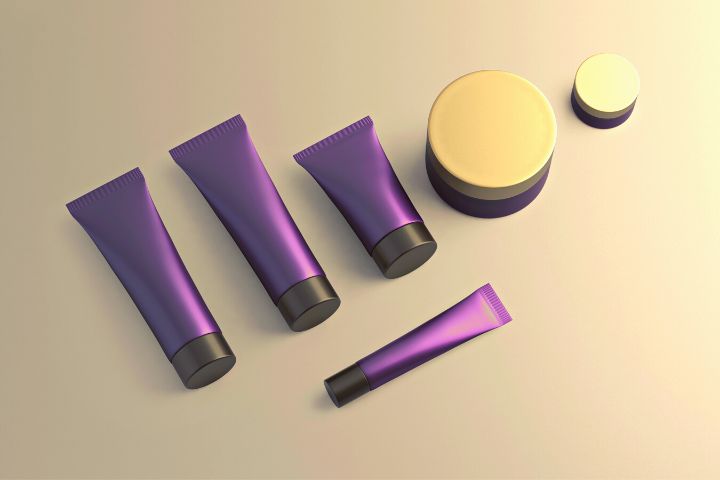Eco-Friendly MakeUp | What to look for?
I have to confess that I love makeup! However, it’s the kind of love that I hate to have. Confused? Let me explain!
The reasons why I love makeup are pretty easy to understand!
For me, it is artwork that can be applied to your face. I feel “me” when wearing bright red lipstick and mascara – and that’s just my basic routine. Makeup is also a nice little brain activity, a bit like learning a musical instrument. I can get lost for hours in the world of eyeliner tutorials or learning about makeup techniques to avoid downturned eyes.
All of that is exciting, but… there’s a side of me that feels something’s not quite right.
Why do often I hate loving makeup?
Well, it is sadly one of the most wasteful industries around!
It’s estimated that a large amount of all garbage in our landfills is made up of discarded containers and packaging. It’s a safe bet that some of your(and mine) makeup containers are in that pile.
While, at this stage, it’s impossible to eliminate all plastic waste in your home completely, I have been trying hard to take steps toward making my beauty routine more sustainable. I do so, knowing it will be far from perfect!

If waste wasn’t bad, there is also evidence of potentially toxic stuff in makeup, including makeup branded as kids’ makeup!
What to Look For in Eco-Friendly Makeup Products
Here is what I have been looking for when it comes to makeup:
Avoid Greenwashed Products
Green is the new gold! “Green” products sell quite well and consumers have been willing to pay more for sustainable options. With higher profit margins, it is no surprise that many beauty companies attempt to get on the eco-friendly bandwagon through their marketing.
However, are they really practising what they preach? Are they really adopting sustainable practices? It’s important to take a closer look at products and their advertising strategies to avoid buying items that have simply been “greenwashed.” Companies that market their products in earthy-toned packaging with natural imagery like trees may be trying to project an eco-friendly image without the manufacturing process to back up their claims.
Packaging – There’s a lot to unpack here!
Packaging is one thing that a lot of brands are finally waking up to! Let’s face it. It should not be rocket science to reduce or even eliminate plastic packaging. We now have a lot of options when it comes to plastic free laundry detergent packaging. If the detergent companies can do this, why can’t makeup brands adopt similar practices. Luckily, some are doing just that. As far as packaging goes, let’s unpack (pun intended) a few components that are best avoided or deserve special consideration:
- Mirrors

Mirrors may be made of glass, but that doesn’t mean they are recyclable. Due to the reflective surfacing painted on the back of mirror glass, it is most often unable to be reused for another purpose. When normal glass is recycled, it is broken down into tiny pieces and then remelted and used for another purpose. Mirrored glass will not melt properly and is generally non-recyclable. It’s best to avoid products that contain a mirror inside their packaging. Instead, carry one mirror with you to use when applying all of your beauty products.
- Pumps
When plastic is recycled, it needs to be separated into different types. Serum pumps, like those you get with your cleansers, foundations, or moisturizers, are unique units with several different types of plastic. This variety makes them very hard to break down and recycle. Choosing tubs or squeeze tubes is a more sustainable choice.
- Magnets
Many eyeshadows and blush cosmetic palettes have magnets to keep the covers closed. You may have several products in your makeup drawer that have hidden magnets included in their packaging. Products that contain magnets are not recyclable.
- Brushes
Whether you use vegan sourced brushes or fur brushes to apply your makeup, you may be surprised to learn that none of them are recyclable. To get the most out of your brushes and increase the level of sustainability, it’s better to take good care of them so they will last as long as possible. Clean your brushes regularly with a high-quality agent to help minimize how often they need to be replaced.

Focus On Eco Claims
When considering a product that claims to be green, you should focus on its specific claims. Broad language like “green”, or “all-natural” can be used to create an image. Truly sustainable products will have more detailed claims like percentages or checkable facts. If you can’t locate any official statistics or data that backs up the eco-stats that are being claimed by a product, it’s best to be wary.
Certifications and Labels
Those makeup products using sustainable manufacturing and ingredients will be proud to share their certifications with their customers. Many cosmetics companies will share their ingredients boldly on their labels along with any recognition they have received for their sustainable practices. These third-party references will make it easier to gain trust in a product and judge its reliability.
Ethical Manufacturing
Another thing to consider is how the product is manufactured and where. The ‘where’ is important as transportation has an impact on carbon emissions. From an ethical point of view, it is also important to know if local laws protect workers and provide them with a safe environment.
How the products are made is also an important aspect. Questions around cruelty to animals and vegan product claims are important ethical considerations.
Research Companies Internally and Externally

A good place to start when looking for a sustainable beauty company is by checking out the brand’s website. Each website should give you a further outline of its eco-friendly practices. Most companies that are concerned about their environmental impact are proud to share their efforts with their customers. Companies that are less than green may use broad language with little evidence of their eco practices.
To get a broader look at a cosmetic company, you may need to do some external research. Trusting a reputable third party is easier than a marketing team focused on overall sales. For over 30 years, companies like Ethical Consumer have made it their business to investigate and judge other companies’ eco-friendly efforts and claims. You can visit their website to find out how your favorite makeup companies are rated for their sustainability. Using other tools like the Aspiration App, you can find more information about beauty companies, including greenhouse gas emissions and energy efficiency.
Recycling Basics
Reducing is better than recycling! We should aim to reduce waste in the first place, however, recycling is a far better option than having items ending up in landfills!
When we think about recycling, most of us think about glass or plastic containers like water or wine bottles. However, many of your makeup containers are plastic and have the potential to be recycled.
You may not be able to toss your empty makeup containers into your standard recycling service provided by your local municipality, but there are special recycling programs available to help you. Some beauty companies will print the recycling instructions for their products on their labels, while others will list it on their websites. It’s up to you to take a deeper look into your recycling options for your makeup containers.
Going forward with a more sustainable makeup routine will require you to consider potential recyclability before buying a product. Checking the labels and investigating different beauty companies to find out about their sustainability will help you reduce your carbon footprint.

Final Thoughts on Eco-Friendly Makeup
It’s more important than ever before that we all try to find ways to adopt more sustainable and eco-friendly habits into our lifestyle. Choosing to buy products from ethical and environmentally conscious companies is just one part of changing how you consider your beauty routine. When you combine researching companies to discover their eco-reputation with being more aware of the type of packaging your products come in, you can take a step towards a sustainable routine.






